#bulgarian interior
Explore tagged Tumblr posts
Text

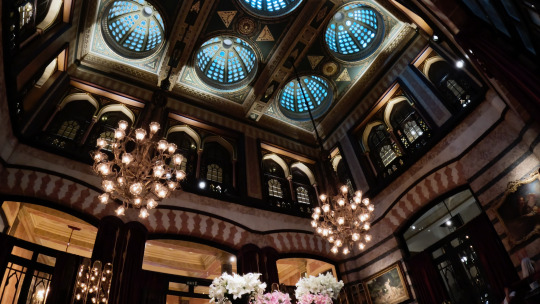
Istanbul
#istanbul#turkey#interior design#infrastructure#library#cafe#dark aesthetic#germany#art#photography#youtuber#bulgarian#photo dump#dark fantasy#gothic#spooky#dark academia#eerie#night life#glow#flowers#home decor#interiors#booktok#bookblr#agatha christie
25 notes
·
View notes
Text

T H E M O R E W E H A V E T H E L E S S W E O W N
#Sunset#Bulgaria#Photography#Summer#Nature#Sky#colors#colourful#Window#Interior#Earth#Landscape#Sunrise#bulgarian blog#български блог#Фотография#Залез#Изгрев#Акумулираща печка йес#Мрежа#Комарник#Миризливник#Природа#Проле��#Лято#Красиво#България#Българско#bulgarian#spilled quotes
38 notes
·
View notes
Text

A Roman Era Sarcophagus Discovered in Bulgaria
An ancient sarcophagus from the Roman era was accidentally discovered on the beach near the Varna resort of Sts Constantine and Helena, as reported by the Ministry of the Interior. A former policeman on holiday in the area noticed the sarcophagus and reported it to the Fifth Regional Department-Varna. The unattended artifact was located near a newly built but still non-operational complex.
Specialists from the Archaeological Museum and a representative of the Main Directorate "Inspectorate for the Protection of Cultural Heritage" at the Ministry of Culture inspected the site. They concluded that the sarcophagus dates back to the Roman era, specifically the 2nd-3rd century AD, featuring rich relief decoration. It measures approximately 90 x 235 x 75 cm and is adorned with garlands, animal heads, rosettes, labris (double-edged ax), and other images.

The heavy artifact has been transported to the Archaeological Museum in Varna for further examination. The Ministry of the Interior has not provided additional details on how the sarcophagus ended up on the beach. The case has been reported to the Varna District Prosecutor's Office, and an investigation is underway.
According to the Bulgarian media outlet "24 Hours," the sarcophagus may have been intended for use as a table, as it was found with a modern marble lid featuring three niches. Experts suspect it was cut to fit the top, and it had been painted with facade paint, which is now being cleaned, according to Milen Marinov, a restorer at the historical museum in Varna.

#A Roman Era Sarcophagus Discovered in Bulgaria#St. Constantine and Helena#sarcophagus#ancient artifacts#archaeology#archeolgst#history#history news#ancient history#ancient culture#ancient civilizations#roman history#roman empire#roman art#ancient art
104 notes
·
View notes
Text
North Macedonia mourns dead in nightclub fire
Northern Macedonia has imposed seven days of mourning for the deaths of young people in the town of Kocani, a government statement said on Sunday.
The fire broke out at a concert by Macedonian local pop group at the Pulse nightclub on Sunday. According to the republic’s Interior Ministry, 59 people died, including teenagers aged 14.
According to Kristina Serafimova, director of the city hospital, there is no one older than 25 among the victims. Another 155 victims are being treated. 18 of them are in critical condition, the Health Ministry said.
Many are being treated in hospitals in other countries: Greece, Turkey and Serbia. Eight were taken by plane to the Bulgarian capital.
“No information will be hidden from the public,” Macedonian authorities assured.
Serbian President Aleksandar Vucic offered to send helicopters and doctors to help after the disco fire during a telephone conversation with North Macedonia’s head Gordana Siljanovska-Davkova.
“I proposed on behalf of Serbia and the president of North Macedonia accepted that we send as assistance helicopters and other medical vehicles, teams of doctors and receive in Serbian hospitals a large number of victims of the tragedy in Kočani,” Vucic shared.
The Interior Ministry of Northern Macedonia said that 1.5 thousand people attended the concert.
Read more HERE

#world news#news#world politics#europe#european news#north macedonia#macedonia#kocani#pulse#nightclub#serbia#serbia protests#belgrade#srbija#aleksandar vucic#vucic
9 notes
·
View notes
Text






Book 546
Alice’s Adventures in Wonderland
Lewis Carroll / illustrated by Iassen Ghiuselev
Simply Read Books 2011
The illustration style of this edition of Alice is not quite my thing, so I was wondering why I bought it and why I still had it. Then, I opened it up for the first time in a long while and remembered.
Iassen Ghiuselev (b. 1964) is a Bulgarian illustrator who specializes in children’s literature. This limited edition of Alice, published in 2011, was the product of six years’ work, and the illustrations are very very good. But the thing that truly sets Ghiuselev’s Alice apart is that the images throughout the book are mostly taken from one single painting that encompasses the entire story in one image. Measuring 20” x 40”, the main painting was done with gouache on wood panel, and it shows—like a kind of panel-less comic book, snaking down then back up—Alice’s entire adventure. It’s quite a thing. In order to fit the key scenes into the painting, Ghiuselev bends the perspective, giving an Escher-like quality to the piece that is actually quite fitting. With a lovely book design that reproduces the main painting on the last interior page as well as on the front and back boards, Ghiuselev adds something new to the long impressive list of Alice illustrators.
#bookshelf#personal collection#personal library#books#library#bibliophile#book lover#illustrated book#booklr#illustration#children’s literature#alice’s adventures in wonderland#lewis carroll#Iassen Ghiuselev#simply read books
12 notes
·
View notes
Text
An ancient sarcophagus from the Roman era was accidentally discovered on the beach near the Varna resort of Sts Constantine and Helena, as reported by the Ministry of the Interior. A former policeman on holiday in the area noticed the sarcophagus and reported it to the Fifth Regional Department-Varna. The unattended artifact was located near a newly built but still non-operational complex.
Specialists from the Archaeological Museum and a representative of the Main Directorate "Inspectorate for the Protection of Cultural Heritage" at the Ministry of Culture inspected the site. They concluded that the sarcophagus dates back to the Roman era, specifically the 2nd-3rd century AD, featuring rich relief decoration. It measures approximately 90 x 235 x 75 cm and is adorned with garlands, animal heads, rosettes, labris (double-edged ax), and other images.

The heavy artifact has been transported to the Archaeological Museum in Varna for further examination. The Ministry of the Interior has not provided additional details on how the sarcophagus ended up on the beach. The case has been reported to the Varna District Prosecutor's Office, and an investigation is underway.
According to the Bulgarian media outlet "24 Hours," the sarcophagus may have been intended for use as a table, as it was found with a modern marble lid featuring three niches. Experts suspect it was cut to fit the top, and it had been painted with facade paint, which is now being cleaned, according to Milen Marinov, a restorer at the historical museum in Varna.
7 notes
·
View notes
Text
Hundreds of protesters took to the streets in Bulgaria this week to protest amid allegations of vote-buying at the country’s parliamentary election. Bulgarians went to the polls on Oct. 27 in an attempt to break a years-long political deadlock. The Interior Ministry said on Oct. 25 that it had received more than 400 reports of vote-buying, while earlier this month, a group of hacktivists published a list of 200 names of people it said were buying votes for a new party launched by sanctioned oligarch Delyan Peevski.
Continue Reading.
4 notes
·
View notes
Text
After three months of tense post-election negotiations, Bulgaria’s GERB party received a mandate to form a government on Wednesday, with the intent to assemble a cabinet with the pro-Russian Bulgarian Socialist Party, BSP, and the nationalist There’s Such a People party.
Prime minister-designate and GERB member Rosen Zhelyazkov, was given the mandate by President Rumen Radev, who had delayed the process to allow parties more time for coalition talks.
“In politics, you need to prioritise which compromise is more important. And the biggest political compromise on our side is that it’s me who is in this position and not our [GERB party] leader Boyko Borissov,” said Zhelyazkov, who is a former transport minister.
Zhelyazkov also added that the cabinet, which first has to be approved by parliament, will seek the “restoration of good governance in Bulgaria”.
The parties in the GERB-led coalition presented a projected ministerial list in which the Socialists will secure the ministries of Education, Energy, Finance, Sports and Justice, while There’s Such a People will take over Transport, Culture, Economy and Healthcare. Everything else, including the Interior and Foreign ministries, will be under the control of GERB.
One more party will still be needed to form a majority in parliament – expected to be a silent partner, as the ministerial positions are already distributed.
This may be the Alliance for Rights and Freedoms, ARF, one of the two parties to emerge from the split in the Movement for Rights and Freedoms, a controversial party relying on votes from the Turkish community. On Tuesday, the ARF stated that it will support the cabinet.
The ARF is attached to Ahmed Dogan, a figure who has been accused of having links to organised crime. He has made no comments on the unfolding events.
‘The left went down the drain’
This would be the first time that GERB and the BSP, longtime political opponents, have collaborated. Their rivalry has previously been one of the few constants in Bulgarian politics: GERB, which has been damaged in the past by corruption claims but in theory is pro-EU, has always clashed with the Socialists, who, in their anti-Western sentiments, have dipped into far-right rhetoric.
“The left just went down the drain. Borissov successfully killed one more party,” former Socialist Party leader Korneliya Ninova, who stepped down last autumn, said dismissively on Sunday. She later described the future cabinet as “a Frankenstein [creation]”.
Coupled with the United Democratic Forces, GERB has been the dominant force in Bulgarian politics since 2009. Its last uneasy governing coalition, with We Continue the Change and Democratic Bulgaria, lasted only half a year in 2023-24.
For There’s Such a People, entering the cabinet would be a success given its erratic recent history. The political newcomers won the July 2021 elections but, in search of a majority, passed up the opportunity to form a government.
In 2021, There’s Such a People entered a coalition government with We Continue the Change, Democratic Bulgaria and the Socialists, only to bring it down in 2022 by quitting and seemingly moving over to GERB – only then to appear close to President Radev, and back calls for Bulgaria to turn into a presidential republic.
Hardline and anti-establishment, There’s Such People sometimes seem close to the pro-Russian Revival party in attitude but it officially positions itself as pro-EU and pro-Western. In its current phase, the party is again gravitating towards GERB.
For the Socialist Party, this would be a comeback. A successor to the repressive Communist Party, it was for a long time the second political force in Bulgaria, but has experienced voter loss and leadership conflicts.
If Dogan’s ARF becomes a part of the government, a party with a questionable background, no visible strategy and no clear geopolitical positioning, would enter power.
The development meanwhile isolates the reformists of Democratic Bulgaria and We Continue the Change, whose leader, Kiril Petkov, is now being investigated by the prosecution over GERB leader Borissov’s 2022 arrest.
Other parties in opposition would remain the Movement for Rights and Freedoms – New Beginning, led by Dogan foe Delyan Peevski, the nationalists of Unity, Moral and Honour and the far-right party Revival.
2 notes
·
View notes
Text
Top 10 Luxury Home Fragrances for a Sophisticated Ambiance

The scent of a home is as vital as its decor. A luxurious fragrance not only creates a welcoming environment but also elevates the overall aesthetic experience. The right aroma can evoke feelings of tranquility, opulence, and warmth. Below, we explore the top 10 luxury home fragrances designed to transform your space into a sophisticated haven.
1. Diptyque Baies Candle
A classic choice for anyone seeking timeless elegance, the Diptyque Baies Candle blends the freshness of blackcurrant berries with the delicate floral notes of Bulgarian roses. This luxurious candle burns evenly and fills the room with an enchanting aroma that lingers for hours. Perfect for living rooms and entryways, it’s a must-have for those who appreciate refined scents.
Why Choose Diptyque Baies?
Long-lasting burn time
Hand-poured craftsmanship
Unique combination of fruity and floral notes
2. Jo Malone Lime Basil & Mandarin Diffuser
Jo Malone is synonymous with sophistication, and their Lime Basil & Mandarin Diffuser is no exception. This fragrance balances zesty citrus with herbal basil and amber undertones, creating a fresh yet grounding scent profile. The minimalist design of the diffuser seamlessly blends with modern interiors.
Key Features:
Elegant presentation
Long-lasting diffusion
Perfect for kitchens and dining areas
3. Le Labo Santal 26 Candle
For those who adore woody and smoky aromas, the Le Labo Santal 26 Candle is an iconic choice. With notes of amber, cedar, and musk, this candle delivers a warm and sophisticated ambiance. Hand-poured and crafted in small batches, it’s a staple for luxury fragrance lovers.
Highlights:
Vegan and cruelty-free
Minimalistic and reusable glass jar
Deep, complex scent
4. Maison Francis Kurkdjian Baccarat Rouge 540 Home Spray
Baccarat Rouge 540 is a fragrance that epitomizes luxury. This home spray features a blend of jasmine, saffron, cedarwood, and ambergris, creating a mesmerizing and opulent scent. It’s perfect for sprucing up your living spaces with just a few spritzes.
Why It’s Exceptional:
Iconic fragrance in a home-friendly format
Luxurious glass bottle
Long-lasting aroma
5. Cire Trudon Ernesto Candle
Known for its heritage and craftsmanship, Cire Trudon offers the Ernesto Candle, inspired by the revolutionary Che Guevara. Its bold notes of leather, tobacco, and spices create an intoxicating scent that exudes character and elegance.
Features to Love:
Handcrafted in France
Unique historical inspiration
Perfect for masculine interiors
6. Byredo Bibliothèque Candle
Bring the charm of a vintage library into your home with Byredo’s Bibliothèque Candle. Its blend of peach, plum, violet, leather, and vanilla is both warm and inviting, making it ideal for cozy evenings.
What Sets It Apart:
Sophisticated scent profile
Long-lasting burn time
Stylish design for any decor
7. Fornasetti Profumi Flora Scented Candle
The Fornasetti Profumi Flora Candle is as much a visual masterpiece as it is an olfactory delight. With intricate floral designs on the container and notes of white rose, jasmine, and tuberose, it’s a luxurious addition to any space.
Key Benefits:
Striking ceramic vessel
Rich and complex floral fragrance
Makes a beautiful gift
8. Nest New York Moroccan Amber Reed Diffuser
The Moroccan Amber Reed Diffuser by Nest New York offers a blend of amber, sweet patchouli, heliotrope, and bergamot, delivering an exotic and comforting aroma. The diffuser’s sleek design is perfect for enhancing any room.
Highlights:
Alcohol-free formula
Continuous fragrance release
Elegant packaging
9. Acqua di Parma Buongiorno Candle
Acqua di Parma’s Buongiorno Candle is an ode to Italian mornings, combining notes of lemon, mint, and rosemary with earthy accents of cedarwood and moss. It’s a refreshing and invigorating choice for any home.
Why You’ll Love It:
High-quality natural ingredients
Clean and uplifting scent
Luxurious Italian craftsmanship
10. Trudon Abd El Kader Room Spray
Inspired by the scents of the Mediterranean, the Trudon Abd El Kader Room Spray features notes of mint, ginger, jasmine, and vanilla. It instantly transforms any space with its lively and refreshing fragrance.
Standout Features:
Premium, artisanal creation
Long-lasting and intense
Easy-to-use spray bottle
How to Choose the Perfect Luxury Home Fragrance
Selecting the right fragrance for your home depends on several factors, including:
Room Size and Function: Opt for lighter scents in small spaces and richer aromas in larger areas.
Personal Preference: Consider your preferred scent profiles, whether floral, woody, or fresh.
Occasion: Use specific fragrances to match the mood or season.
Presentation: Many luxury fragrances come in elegant packaging that complements your decor.
Final Thoughts
A luxurious home fragrance elevates your living space, adding depth and sophistication. From the timeless elegance of Diptyque to the bold character of Cire Trudon, these top-tier options cater to every taste and style. Invest in one (or several) of these luxurious scents and experience the transformative power of fragrance.
2 notes
·
View notes
Text




Vogue Korea posted on instagram
Via @/voguekorea
“BVLGARI PARFUMS X FELIX
While blond Felix is a grand and unique feeling, he of chicken hair catches our eye with a more modern and simple charm. In this project, the Bulgarian 'Jur de Pernet' was no different from the entity that keeps communication with Felix.
"As for this perfume, I felt like my friend, the other perfumes l've been getting in a lot since childhood. " He knows how important perfume and fragrance are in life. The freshness of ginger gives a pleasant vigor to the interior of the Bulgarian 'Jur de Pernet', designed by master conductor Jacques Cavallier, who is skilled in woody and musky notes.”
#stray kids#lee felix#han jisung#changbin#hwang hyunjin#leeknow#bang chan#jeongin#seungmin#felix#felix skz#felix yongbok#felix stray kids#stray kids felix#skz felix#yongbokie#skz yongbok#stray kids yongbok#lee yongbok#vogue korea#vogue#fashion
16 notes
·
View notes
Text
Sofia: The Hidden Gem of the Balkans
Located in the heart of the Balkans and having hosted numerous civilizations throughout history, Sofia, the capital of Bulgaria, is a true paradise for travelers with its rich cultural heritage, historical landmarks, and breathtaking views. Here are some of the must-visit places in Sofia:
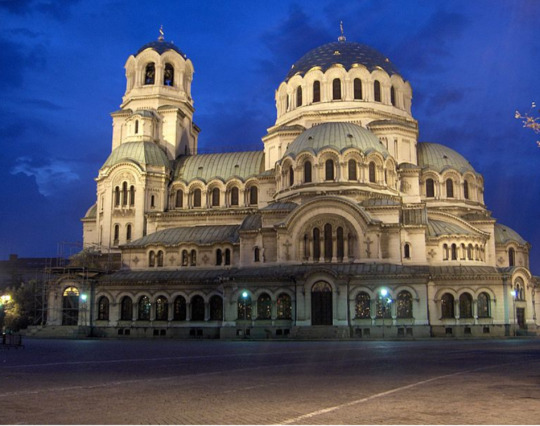
1. Alexander Nevsky Cathedral: One of the symbols of the city, this magnificent cathedral was designed by Russian architect Alexander Pomerantsev in the 19th century. Built in honor of Tsar Alexander Nevsky, a Bulgarian national hero, the cathedral enchants visitors with its architectural elegance and mosaic interior.


Icon of St. Eudokia
2. Boyana Church: Located just outside Sofia in the village of Boyana, these churches are included in the UNESCO World Heritage List for their frescoes dating back to the 10th and 13th centuries. With its historical and artistic significance, it's a fascinating destination to explore.
------------------------------------------------------------------------------
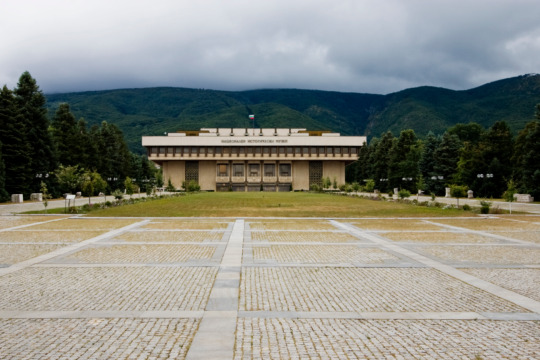
3. National Museum of History: Ideal for those who want to delve into Bulgaria's rich history in detail. The museum houses a wide range of historical collections spanning from ancient times to the Middle Ages, from the Ottoman period to the Bulgarian National Revival.
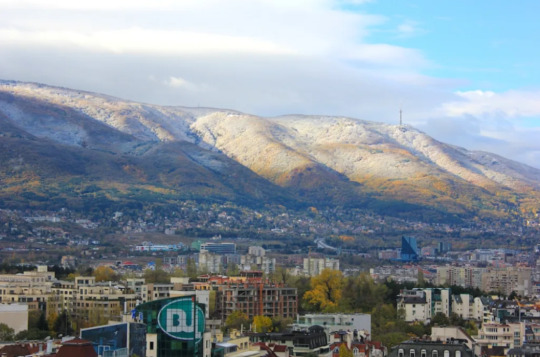
4. Vitosha Mountain: Vitosha Mountain, located near Sofia, is a wonderful escape for nature lovers. Throughout the year, it offers outdoor activities such as trekking, mountain biking, and skiing. The villages at the foot of the mountain are also interesting stops for travelers.
5. Roman Thermae: The ruins of the Roman Baths in the center of Sofia are an important relic from the ancient Roman period. Visitors can see the remains of ancient thermal baths and learn about life during the Roman era.
------------------------------------------------------------------------------
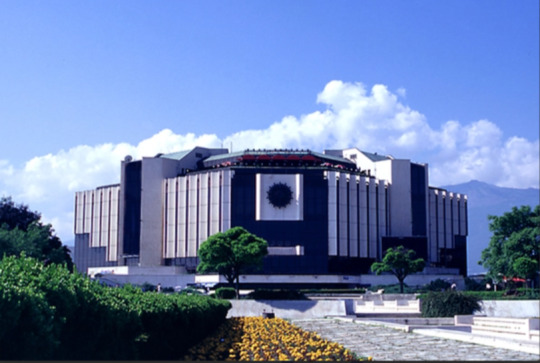
6. National Palace of Culture (NDK): The largest conference and exhibition center in Bulgaria, NDK stands out with its modern architecture and events. It is a popular venue for concerts, exhibitions, festivals, and other cultural events.
Sofia is a city filled with historical and cultural riches. The places listed above will help you explore the city's rich heritage during your visit.
2 notes
·
View notes
Text
EU prosecutor accuses Bulgarian authorities of hindering investigations
A senior Bulgarian judge from the European Public Prosecutor’s Office (EPPO) accused Bulgarian authorities of obstructing investigations into corruption and fraud, Euractiv reported.
Teodora Georgieva, head of the Bulgarian EPPO office, spoke at a conference in Sofia on Tuesday, organised by the Bulgarian Institute for Legal Initiatives.
We have several cases of witnesses who were fired from state services because they cooperated with the [EPPO] investigation.
Georgieva also cited a case where the Interior Ministry refused to execute a court order to search and seize an office, prompting an internal police investigation that found no wrongdoing.
She pointed to widespread corruption in public tenders, revealing that the same commercial companies repeatedly won high-value contracts despite lacking the necessary professional capacity or experience.
The EPPO official stressed that a major legal loophole in Bulgaria, where customs fraud—such as falsifying data on the origin, quantity, and quality of goods—was treated as an administrative violation rather than a crime.
This legal gap leads to distortion of the EU’s internal market.
Unimplemented EU directives
The head of the Bulgarian EPPO office also criticised the country’s failure to fully implement the EU Directive on fraud affecting the bloc’s financial interests, particularly regarding the criminal liability of legal entities. The lack of compliance undermined efforts to combat corruption and protect EU funds.
The conference was opened by Bulgarian President Rumen Radev, who called for decisive action against “political and oligarchic influence on the judicial system.” Radev lamented the lack of accountability for high-level crimes over the past 30 years, describing it as a “brutal demonstration of impunity and helplessness.”
No effective investigations have been conducted into all reports of crimes at the highest levels of power over the last 30 years, no one has been found guilty, and no one has been punished.
Georgieva’s revelations underscored the challenges facing Bulgaria’s judicial system and its cooperation with EU anti-corruption efforts. As pressure mounts for reform, the Bulgarian government faces increasing scrutiny from both domestic and international stakeholders.
Read more HERE

#world news#news#world politics#europe#european news#european union#eu politics#eu news#bulgaria#bulgarian#EPPO#corruption
1 note
·
View note
Photo

Sofia a City in the Making
Sofia, the capital of Bulgaria, is working hard to become a modern and beautiful city. It is located on a flat plain, with stunning mountain ranges in the background, creating a picturesque setting. The city has quickly built impressive public buildings. The Royal Palace, where Prince Ferdinand sometimes stays, is grand and elegant. The National Assembly building is large and well-built, with an ornate interior that shows the city’s growing importance. Sofia also has modern technical schools, which are well-equipped and offer up-to-date education for the people. The military barracks are of high quality, as good as those in England, and the Military Club is as stylish as any club in London’s Pall Mall.
In addition, Sofia has affordable, clean, and comfortable hotels for visitors, making it an easy place to stay. The city also offers a good theatre for entertainment. For relaxation, there are lovely gardens where people can sit and enjoy music played by a band on cool summer evenings while sipping drinks. The people of Sofia are determined to create a capital city that reflects the hardworking and energetic spirit of Bulgaria Adventure Bulgaria Tour.
Bulgaria’s Struggle for Independence
Sofia’s development is even more impressive when considering the country’s history. For centuries, Bulgaria was under Turkish rule, and this occupation caused great harm to the country. In 1878, however, the Turkish rulers were forced out by Russian forces, and Bulgaria gained its independence. This was a turning point in Bulgarian history, as the people finally had the chance to build their nation from the ground up.
Once the Turks left, the Bulgarians worked quickly to remove the signs of Turkish rule. One of their first actions was to clear away the evidence of the Turkish occupation. The Turkish population also began to leave, and their cultural influences slowly faded. Many of the mosques that had been built by the Turks were abandoned. These mosques, which had once served as places of worship, were repurposed for other uses. Some were turned into prisons, others into markets, and some even became public baths.
The Decline of Turkish Influence
Today, only one mosque in Sofia remains in use. The city has worked hard to erase the traces of the Turkish past, focusing on building a new, modern identity for itself. This effort is evident in the city’s architecture, culture, and the everyday lives of its people.
In just a short time since gaining independence, Sofia has transformed from a city under foreign rule to a thriving, energetic capital. As Bulgaria continues to grow, Sofia is working to ensure that its future is as bright and promising as its people are determined to make it.
0 notes
Text
President Rumen Radev expressed skepticism about Ukraine’s chances of achieving military gains, even with increased financial and military support, during his remarks at the high-level "Aqaba Process for the Balkans III" meeting in Sofia. He said that had more voices of leaders and experts been heard earlier, the Ukrainian counteroffensive launched in 2023 — which he described as fatal — might have been avoided. Radev reiterated his position that providing additional funding and weapons to Ukraine would not bring success, but instead prolong destruction, cause more casualties, hinder peace efforts, and lead to further territorial losses for Ukraine.
The Bulgarian president warned that the international community must abandon the illusion that peace and security can be ensured for certain countries or regions at the expense of others. He emphasized the importance of dialogue and cooperation among state leaders to strengthen security, particularly at a time when threats are becoming more immediate and widespread. According to him, history has repeatedly shown that during global conflicts, no region can remain untouched, and isolated pockets of peace cannot exist.
The "Aqaba Process for the Balkans III" meeting, co-chaired by Bulgaria and Jordan, gathered nearly 30 delegations, including heads of state, government representatives, and officials from international organizations and diplomatic missions. King Abdullah II of Jordan and President Radev jointly welcomed the leaders of Bosnia and Herzegovina, North Macedonia, Montenegro, Slovenia, Albania, Kosovo, Croatia, and Serbia, as well as the Belgian interior minister, to the forum.
Established in 2015 by King Abdullah II, the Aqaba Process aims to tackle global challenges such as terrorism, radicalization, and illegal migration. This third high-level forum, focused on the Balkan region, underscores the area’s heightened sensitivity to security issues, given its proximity to military conflicts that contribute to trafficking, migration pressures, and extremist threats.
Radev noted that the Balkan countries are particularly vulnerable to the broader consequences of instability beyond their borders. He emphasized the importance of seeking shared solutions through platforms like the Aqaba Process and highlighted the need for a collective understanding of regional and global security risks.
2 notes
·
View notes
Text
Saw this and immediately worried about the militarization of the borders that would ensue to keep "fortress europe" safe and lo and behold:
"The agreement also foresees the joint deployment of border guards to the Bulgarian-Turkish border."
"Karner said on December 9 that Vienna's decision to lift its veto was based on a significant drop of migrant arrivals in Austria via Bulgaria and Romania."
"Romanian Justice Minister Catalin Predoiu told journalists that for the first six months, random checks would still be performed based on risk assessment [...] intended to fight illegal migration and people smuggling."
January 1, 2025 - A stray dog in Petea receives applause for being the first to cross the newly visa-free border between Hungary and Romania, as Romania joins the Schengen area.
#fortress europe#also the language is giving soooooo western european/white supremacy#'well-deserved right' 'where you belong' '#congratulations romanians and bulgarians i guess youre civilized western europeans now!#mediterranean grief
40K notes
·
View notes
Photo

Sofia a City in the Making
Sofia, the capital of Bulgaria, is working hard to become a modern and beautiful city. It is located on a flat plain, with stunning mountain ranges in the background, creating a picturesque setting. The city has quickly built impressive public buildings. The Royal Palace, where Prince Ferdinand sometimes stays, is grand and elegant. The National Assembly building is large and well-built, with an ornate interior that shows the city’s growing importance. Sofia also has modern technical schools, which are well-equipped and offer up-to-date education for the people. The military barracks are of high quality, as good as those in England, and the Military Club is as stylish as any club in London’s Pall Mall.
In addition, Sofia has affordable, clean, and comfortable hotels for visitors, making it an easy place to stay. The city also offers a good theatre for entertainment. For relaxation, there are lovely gardens where people can sit and enjoy music played by a band on cool summer evenings while sipping drinks. The people of Sofia are determined to create a capital city that reflects the hardworking and energetic spirit of Bulgaria Adventure Bulgaria Tour.
Bulgaria’s Struggle for Independence
Sofia’s development is even more impressive when considering the country’s history. For centuries, Bulgaria was under Turkish rule, and this occupation caused great harm to the country. In 1878, however, the Turkish rulers were forced out by Russian forces, and Bulgaria gained its independence. This was a turning point in Bulgarian history, as the people finally had the chance to build their nation from the ground up.
Once the Turks left, the Bulgarians worked quickly to remove the signs of Turkish rule. One of their first actions was to clear away the evidence of the Turkish occupation. The Turkish population also began to leave, and their cultural influences slowly faded. Many of the mosques that had been built by the Turks were abandoned. These mosques, which had once served as places of worship, were repurposed for other uses. Some were turned into prisons, others into markets, and some even became public baths.
The Decline of Turkish Influence
Today, only one mosque in Sofia remains in use. The city has worked hard to erase the traces of the Turkish past, focusing on building a new, modern identity for itself. This effort is evident in the city’s architecture, culture, and the everyday lives of its people.
In just a short time since gaining independence, Sofia has transformed from a city under foreign rule to a thriving, energetic capital. As Bulgaria continues to grow, Sofia is working to ensure that its future is as bright and promising as its people are determined to make it.
0 notes